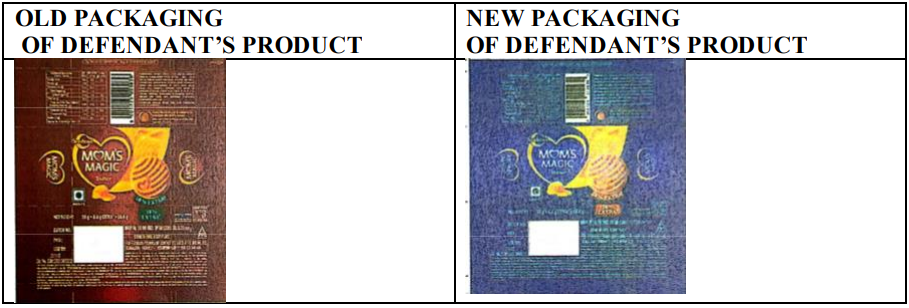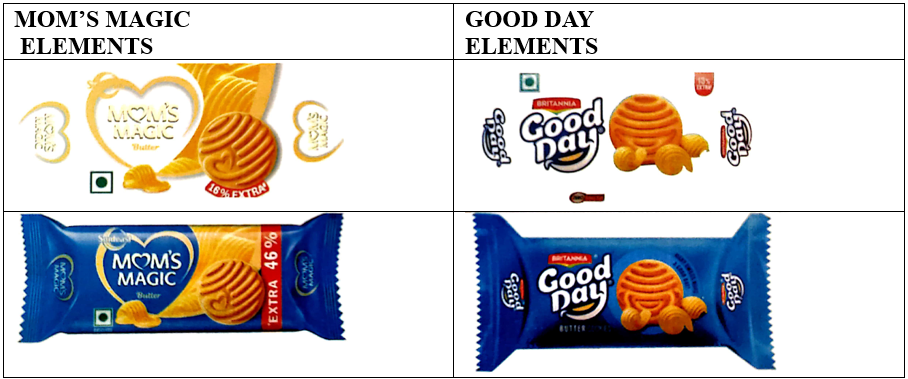In a recent trademark dispute, Britannia Industries Limited (Plaintiff) and ITC (Defendant) found themselves at odds over the packaging of their respective biscuit products before Madras High Court. Britannia alleged that ITC’s Mom’s Magic butter cookies infringed upon the trade dress associated with their Good Day Butter Cookies. Specifically, the plaintiff claimed that the defendant’s change in packaging colour from red to blue was an attempt to capitalise on the plaintiff’s goodwill and reputation, leading to consumer confusion.
The Plaintiff Britannia, which had adopted the GOOD DAY mark in 1986, argued that the distinctive packaging style associated with Good Day Butter Cookies had become synonymous with their brand. The plaintiff had secured protection for its marks, GOOD DAY, and the distinctive packaging design and asserted that the defendant’s use of MOM’S MAGIC, along with similar blue packaging, amounted to infringement, passing off, copyright violation, dilution of goodwill, and unfair competition.
The Defendant ITC countered these claims, asserting their status as the registered proprietor of the MOM’S MAGIC mark for butter cookies. They explained that the change in packaging colour resulted from common trade practices, as blue packaging is often associated with butter and dairy products. ITC further argued that there were no substantial similarities between the two products’ packaging.
Single Judge’s Order
The Single Judge acknowledged Britannia’s long-standing use of the packaging and its recognition among consumers. The Court determined that ITC’s change in packaging colour, particularly in the southern regions of India, lacked reasonable justification.
Arguments before the Division Bench
Appealing the Single Judge’s decision, ITC emphasised the differences in the packaging’s individual elements and reiterated the common trade practice of using blue for butter cookies. They maintained that only the colour of their packaging had changed, not the design itself. The packaging is given below:
ITC argued that the plaintiff’s case hinged solely on using the colour blue. They further contended that the individual elements of the packaging exhibited significant differences when viewed without the colour blue. Additionally, they asserted that since the law did not protect the use of a single colour, the plaintiff’s claims should be dismissed. The individual elements of the packaging are presented below:
Britannia countered that when placed side by side in supermarkets, the packaging of the two products could easily cause consumer confusion. They acknowledged that they had not pursued legal action against ITC’s previous red packaging due to the reduced likelihood of confusion. However, they asserted that the sudden switch to blue packaging indicated ITC’s dishonest intentions. Britannia emphasised that the injunction sought only applied to the blue wrappers, allowing ITC to continue selling their products in red packaging.
Court’s Judgment
The Division Bench upheld the Single Judge’s order, granting an injunction against the defendant’s blue packaging for Mom’s Magic butter cookies. The Court reiterated that injunctions must be granted when a prima facie case of infringement is established. The Court found that the defendant’s trade dress was deceptively similar to the plaintiff’s trade dress, even though the individual elements of the packaging were different. The Court noted that the defendant’s use of a blue colour scheme, along with other design elements, was likely to confuse consumers into believing that the defendant’s products were from the same source as the plaintiff’s products. The Court also found that the plaintiff was the prior user of the trade dress and that the defendant’s adoption of the trade dress was dishonest.
This case emphasised that when assessing trade dress infringement, it is important to consider the overall similarities and the perspective of ordinary consumers. It also reinforces the idea that minor changes, like a packaging colour switch, can significantly impact consumer perception and may necessitate legal action to safeguard a brand’s unique identity.
Authors: Manisha Singh & Tushitta Murali
Link: https://www.lexology.com/library/detail.aspx?g=16f96c2a-c47a-4335-b79c-9a73e2864b28





